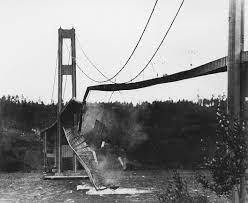One of concepts enshrined in the Monaco Memo is that the Department of Justice (DOJ) will assess corporate culture for any company that may find itself under investigation for Foreign Corrupt Practices Act (FCPA) violations. This enshrinement is not exactly new as Deputy Attorney General (DAG) Lisa Monaco announced this new DOJ focus in October 2021 in her speech to the ABA White Collar Bar Conference. The parameters of how the DOJ will assess culture are still being worked out but Chief Compliance Officers (CCOs) and compliance professionals need to be considering this issue in the context of their own compliance programs and corporate culture in case the DOJ ever comes knocking. Over the next several blog posts, I will be exploring how a corporate compliance function can assess, monitor and improve your corporate culture.
We begin with assessing your corporate values and then aligning them within your organization. In a recent Harvard Business Review (HBR) article, entitled What Does Your Company Really Stand For?, authors Paul Ingram and Yoonjin Choi explored these and other issues. I have adapted their work for the compliance professional. The authors believe that corporate values are more critical then ever.
New technologies, the lingering effects of the Covid-19 pandemic and the continued fallout from the Russian invasion of Ukraine have forced companies to “reassess what they value in their relationships with their employees, their customers, and even their societies… Across industries and sectors, companies have been forced to ask themselves, “What do we stand for?” and “What binds us to one another and to the community?” Through their research, the authors discovered, “They discovered that when a company’s official values match those of its employees—a situation they call values alignment—the benefits include higher job satisfaction, less turnover, better teamwork, more-effective communication, bigger contributions to the organization, and more-productive negotiations, not to mention more diversity, equity, and inclusion.”
The authors developed a five-step approach for values alignment. The first step is to identify the values within your employee base and create what they call a “values structure” which represents “the eight values that are most significant for each individual and the interdependencies that person perceives among them. For example, someone might believe that pursuing excellence will help satisfy the value of achievement.” Step two is to identify key priorities from strategy to determine “What is the most important thing the organization can do to achieve its strategy?” This determination will allow you align your official values with your organization’s mission.
The next step is to wed values that serve both the organization and its employees. Here you can use a group or groups of employees to make these connections to create value statements based upon the outputs from steps one and two. You may create many value statements, but these can be refined down. The authors note, “values alignment does not require exact matches; someone who identifies achievement as an individual value is likely to feel aligned with a similar organizational value—say, accomplishment. So you have some flexibility in creating your potential value statements.”
Next, in step four, you should begin the assessment process. Here try to be as wide and inclusive as possible. The authors state, “any member of the organization whose input is significant to its ultimate success should be invited to weigh in.” The benefits are clear as the more employees and other stakeholders involved, the wider the engagement will be going forward. This will lead to greater buy-in at the end of the day as well. The fifth and final step is to generate a final list of organizational values. In this process, senior management may become more involved.
The authors concluded their article by noting, “when properly aligned, values are powerful. They serve your strategy and provide your employees with authentic connections, and in so doing they create a foundation for better group performance and higher personal satisfaction. But values are not magic. They don’t become real or effective just because you announce them to your organization in a town hall meeting or etch them into marble at HQ. If you want to enjoy their benefits, you need to work with everybody in your organization to identify and align them. That requires the kind of careful attention and hard work that we’ve described in this article. We can assure you that it’s worth it.”
From the compliance perspective, the protocol the authors have set out can be quite useful. Recognizing that values are but one part of an overall corporate culture, this gives you a mechanism to think through how to begin an overall assessment of your organization. Values do make a portion of an overall culture. Through the engagement advocated herein, you can not only get a good reading on such key values as trust and respect, but, more importantly, learn how to incorporate them as overall assets into your corporate culture.








